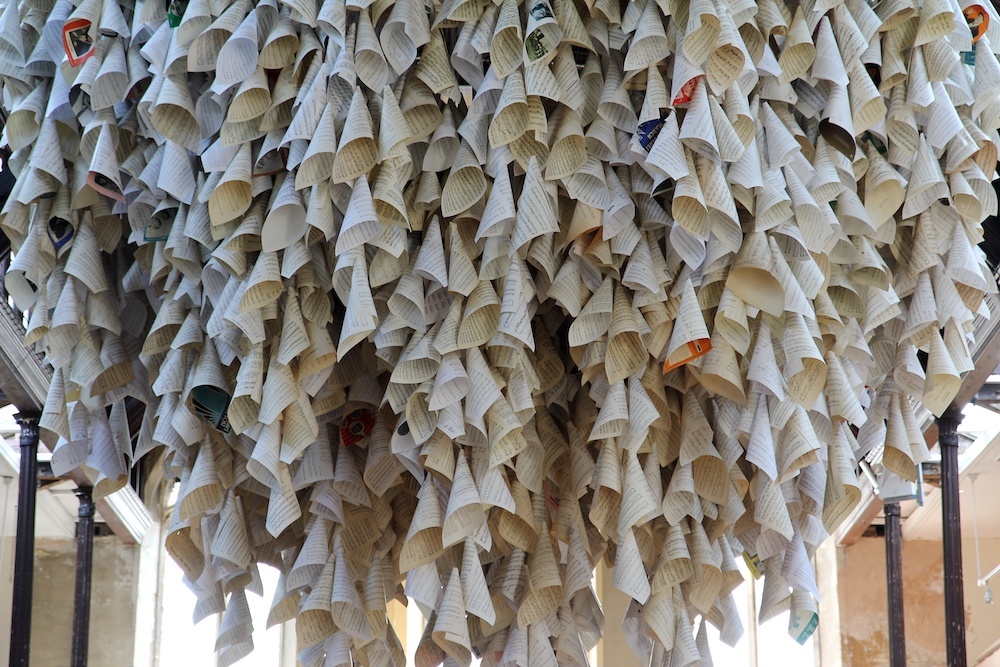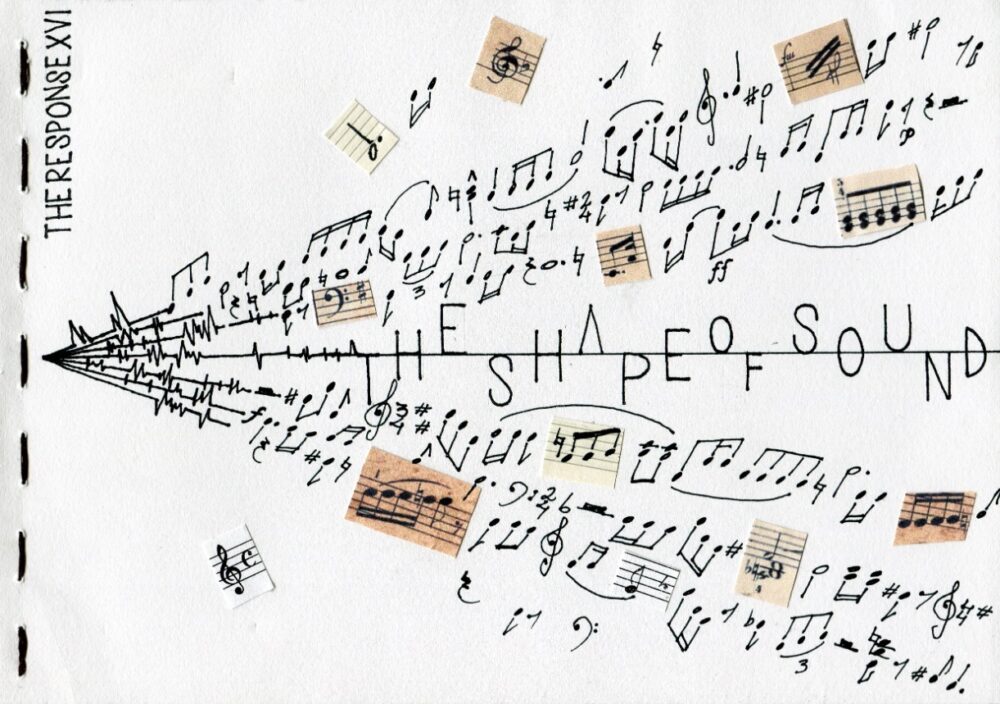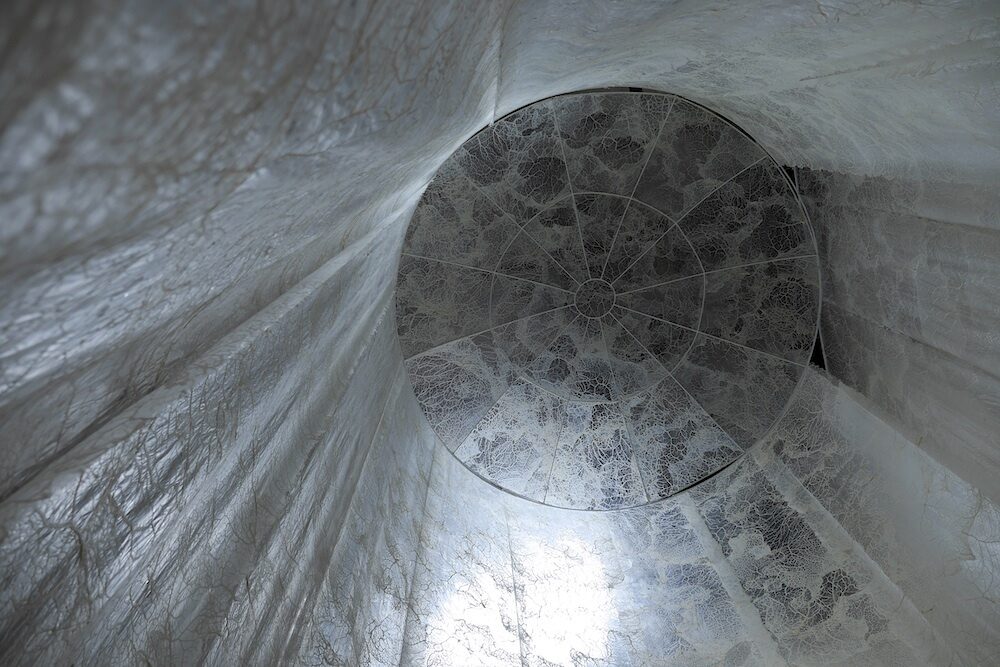Resonance
Susie MacMurray
Susie MacMurray is a classical musician turned visual artist. Her work encompasses drawing and sculpture and ranges in scale from the small and intimate to the architectural. Her engagement with materials and with the body is at the heart of her practice. She has completed several site-specific installations that have sought to immerse or overwhelm the viewer and describes these works as producing ‘a physical experience akin to the sensation a musician feels playing at the centre of an orchestra.’
‘One way to imagine music is as a complex intertwining landscape of sounds textures, volumes and rhythms. I am thinking about how the light in the space – itself a transient, moving and ever-changing thing – could help to describe an alternative musical landscape.’
On Thursday 18 July 6-7.30pm Susie MacMurray discussed her past work and artistic approach with Professor Catherine Harper, Dean of the School of Arts and the Digital Industries of the University of East London, and UK editor of Textile: the Journal of Cloth and Culture.
Much of the sheet music purchased to create Resonance came from the Music Corner. They have been selling secondhand sheet music and instruments to raise money to build a school in India.
Resonance is part of Time and Place, a collaborative project with organisations in the UK and France funded by the Interreg Iva Channel programme. For more information on the project and the partners visit timeandplaceproject.org
About The Artist
"I am a former classical musician turned artist. From an early age I have been used to the necessary discipline of daily practice. For upwards of 20 years I played scales, repeated fingering and breathing exercises and returned again and again to tricky passages, attempting to master them, and then to continually improve that mastery. It is work that is never done, never finished. It always needs to be re-done the next day. It is ingrained in my psyche. Musicians are also like athletes. They need to be ‘in shape’. The muscles of the face that form the embouchure and the fine motor skills demanded of the fingers and thumbs need to be kept match-fit.
So the daily life of a musician is supremely Sisyphean in nature. In addition my particular discipline as a bassoonist requires the instrumentalists to construct and fine-tune their own double reeds from scratch. This involves the cutting, bending, binding and scraping of special bamboo cane into little delicate vibrating noise producers, similar to those used to make the sound in bagpipes. Being an organic material, subjected to prolonged exposure to the saliva of the player these reeds only last a short time, quickly breaking down and ceasing to vibrate freely as they become brittle and decay. What a madly uncertain vessel to invest your sense of self in!
For all its toil, anxiety, and sometimes pure terror, the experience of being an orchestral musician, indeed of making music in any kind of large ensemble is quite extraordinary. There is nothing I have ever experienced to compare with the sensation of sitting in the middle of a full symphony orchestra performing something by Richard Strauss, Stravinsky or Brahms. You are part of something achingly, exhilaratingly emotional and at the same time you are physically immersed in it. The vibrations of gloriously orchestrated sound course through you to the core, as well as round you. They don’t just enter your ears; they suffuse the permeable membrane of your body and your heart.
For Fabrica I have chosen to work with used printed music manuscript. I like the material as an imperfect physical marker for a shared emotional activity; this activity that normally leaves no material trace of itself. The paper I am using is secondhand, used and donated from many different anonymous sources. Some from my own collection, some from the local community, some from further afield. There is piano music, vocal and instrumental music, chamber music and orchestral parts. There is jazz, classical and folk music, and also popular music both contemporary and old. It is a physical layering of many different sounds. Some of it has been played so often the pages are fragile and worn from the hands that have turned them. It is the touching that wears them out, not the playing.
I like that as a former church Fabrica has been sung in. The fabric of the building has vibrated with sound. Where are the traces of this? The air in the volume of the space has been filled with invisible sound. One way to imagine music is as a complex intertwining landscape of sounds, textures, volumes and rhythms. I am thinking about how the light in the space – itself a transient, moving and ever changing thing – could help to describe an alternative musical landscape."
Resonance is part of a programme of activity in our European-funded collaboration programme Time and Place. One of the themes central to the project is changing landscapes and this exhibition is part of that strand of activity.
Artist biography
Susie MacMurray is a British artist whose work includes drawing, sculpture and architectural installations. A former classical musician, she retrained as an artist, graduating with an MA in Fine Art in 2001. She has exhibited in the UK and abroad including the Museum of Art & Design in New York, the V&A and the Royal Academy of Arts in London. Her forthcoming solo show at Danese in New York opens 12 September 2013.
An engagement with materials and with the body is at the heart of MacMurray’s practice. Her role is one of an alchemist: combining material, form and context in deceptively simple ways to stimulate both physical and cultural associations within those who encounter her work.
Working in installation and sculpture she has gained a reputation for poetic site-specific interventions in historic spaces. Her work typically references the history of a space and merges the particularities of that history, the specifics of the site, and the meanings of materials to gain insight and raise questions about the relationship between place and people.
Susie MacMurray is represented in London by Gina Agnew.






